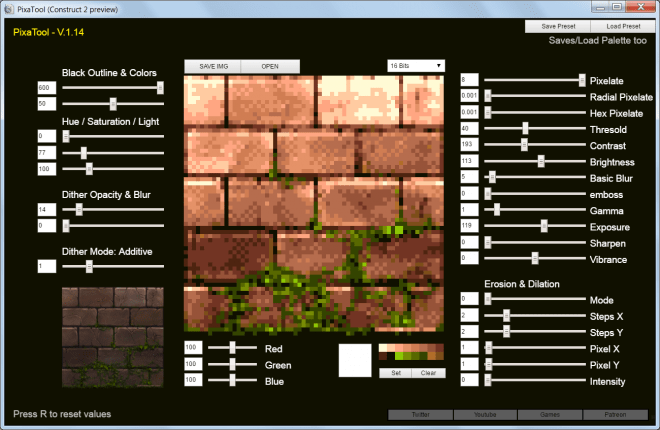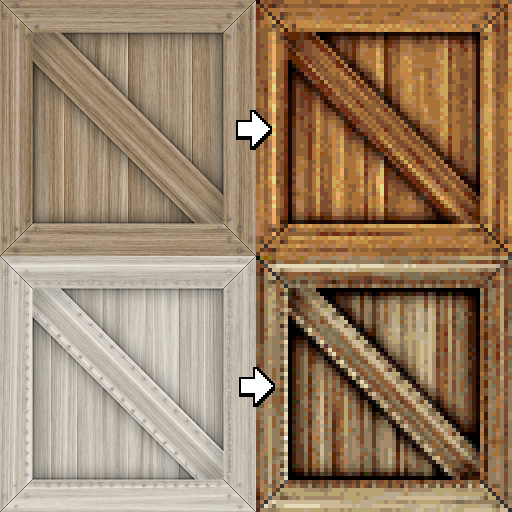

That's only what I have found out messing with this for not too long. It shows this behaviour the most with cities (even more if the pic is taken from the road), anything that is isometric/has one point perspective (img no.2 and 4 in mine, no.4 in this post), cars (not sure about this, might be wrong but cars in general are bad). I think this is probably the best (and free) pixel art model as of now. Let me say this however, the art pieces are completely different each time, it just has a problem with colours. You may say that if I use bad prompts I can't expect good results but that's the point isn't it? I should expect incoherent bullshit but it seems to like being somewhat consistent without much input, something that shouldn't happen with a good model. Now try to remove it, and you got something extremely bad. For the "defaulting" behaviour, you can see the kinda terrible cat image on how it tries to attach purple on something that isn't even purple, all because it got confused (based on my less than ideal prompt). However, without the same seed, it ends up like no.7 which I think is downgrade from no.6 (I use DDIM as you said, things aren't too different in eular-a). 1 is what happens when you try to negative prompt 2 with "purple", not bad but it ends up looking dull overall ("cold" if you count that as an aesthetic). It's not heavily biased, that's a bit vague compared to what I was trying to say, but rather "defaults" to that when it's "confused" or for some prompts that it thinks is "purple" (for lack of a better term). Just an automated way of doing what can of course be done by other means freely even using gimp.Īpologies, I meant "purple" not "people". In other words, you don't have to work at 1:1 scale and can show off the end result in high res while looking like it was done at a much smaller scale.

Very powerful that since it allows you to "fake" the effect at larger resolutions really easily by simply dividing and multiplying. The dithering in Pixelover is ok for larger images but not as flexible as Pixatool, which does a better job on smaller res stuff.įor the actual pixelization I use Pixelmash since on export you can specify exactly what resolution you want while keeping the same aspect ratio of the pixelization effect. I use Pixelover for the color palette extraction and indexation and simplification down to whatever bit depth I need and a neat little denoising feature that is often useful for a "posterized" effect, does the best job of that. I use Pixatool for the dithering and crt/scanline effect exclusively.

I'm not affiliated with any of those links in case anyone is wondering, just bought them and use them even before I got into AI imagen. So have a look if you're at all interested in this stuff it works so well with SD imagen in this style made possible by these amazing freely shared models. It's all done automatically mostly, in a few clicks and gets you results that are stunning even if you can't personally create in this style at all but still enjoy the aesthetic or need it for your project. But the thing is, when your base image is already very very close to being actual pixel art in style, this stuff works miracles with it and brings out the next level. A lot of this stuff is turned around the idea that you take your base image and "pixelize" it then work with it to animate. The workflow is to take the output of AI like this (I used MJ for this earlier on before SD) and to make it work as actual pixel art that you can use in gamedev or various other purposes. Here are the ones I use for this that work beautifully combined with SD's pixel style output as shown here by your model: All with a few clicks and maybe an hour of youtube tutorials for each app. You'll be able to get proper dithering in many styles, 1 to 1 ratio for screen res concerns, even scanlines and crt effects overlaid on top of this output as well as standardized traditional color palettes from 8 bit all the way up. Hope you don't mind but I'm going to drop a couple links to some 3rd party and indie apps here for people that would want to take this kind of output and almost effortlessly transform it into "pixel perfect" stuff without teaching themselves that artform.


 0 kommentar(er)
0 kommentar(er)
